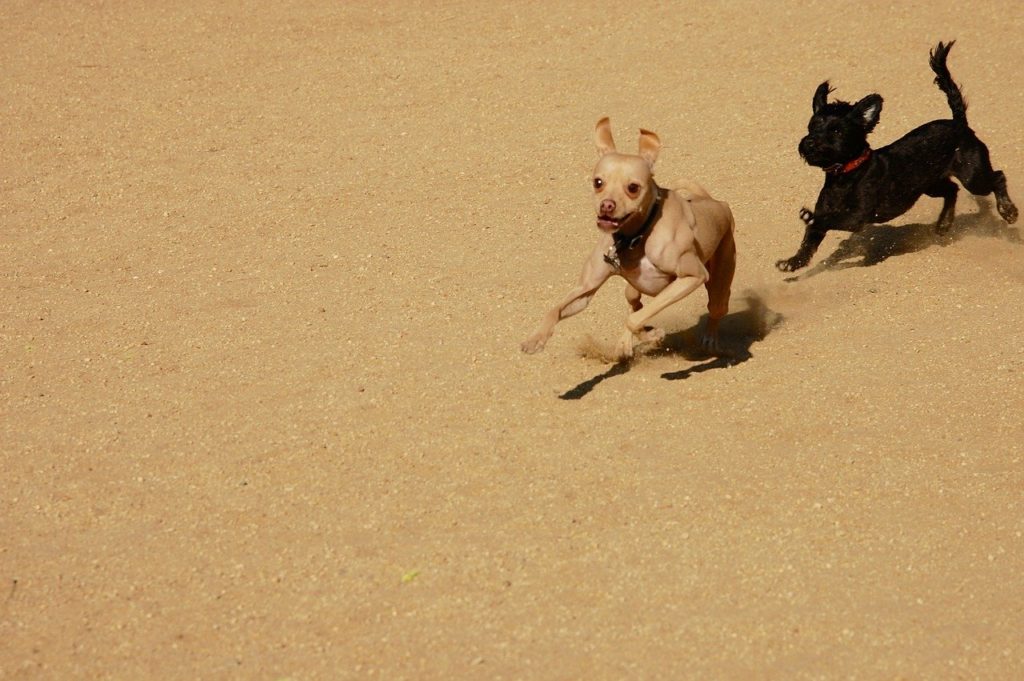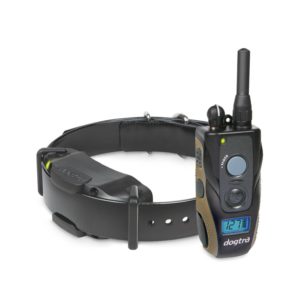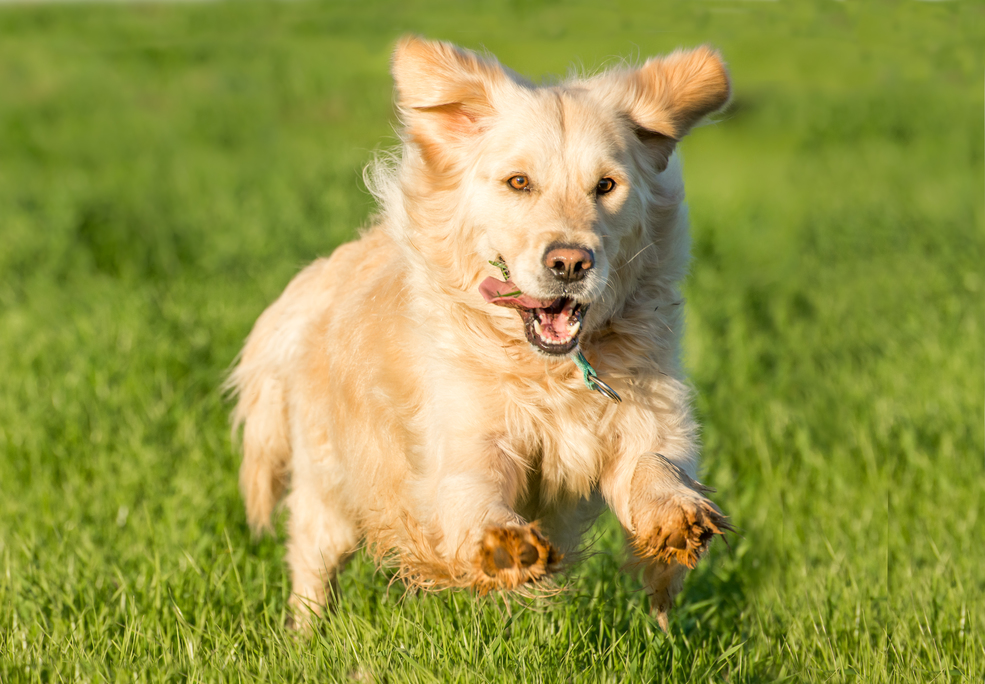If there is one thing every dog loves, it is a good chase. Although natural, chasing behaviors can be a nuisance and sometimes dangerous or even fatal.
Do you have a dog in which the chase drive is so strong that once he engages – bang! he’s gone? Does your dog chase cats? Does he chase deer, livestock, chickens, squirrels, and everything else that moves? Does your dog chase cars or bicycles?
If you answered yes to any of these, you’re probably reading this because you would like to eliminate that behavior. Yet it seems that once he gives chase, there is no stopping him.
Or is there?
Why Dogs Chase
Canine behaviorists agree that chasing behavior stems from an innate predatory impulse. In fact, many breeds are bred for this very trait like herding dogs and some terriers for example.
Plus, every dog owner knows that dogs enjoy chasing. A strong drive is usually a desired trait that can be expressed in playful or useful activities.
For untrained dogs, chase drive can result in dangerous behaviors such as chasing cars. Canines are hardwired to chase, so training can go out the window when a squirrel or cat dashes by. Livestock and neighbors pets can be killed when owners lose control over their dogs.

What Do Dogs Chase?
Dogs can chase anything that moves. Sometimes it is not a big deal, like chasing something blowing in the wind on a field is unlikely to be dangerous. Many dogs like to chase a ball or stick but again this is safe and part of thier natural behaviour.
But your dog chasing cars on the other hand could put your pup in grave danger.
If a dog chases a cat or anotther dog there is potential danger as one or more of the animals could end up running onto a raod or be injured during the chase.
Owner Responsibility
As caretakers of our pets, it is our responsibility to contain and control our pets. We must not expect our dogs to cease exhibiting normal dog behavior.
Attempting to eradicate what is instinctual may result in a more disturbing or neurotic behavior. Instead we can train our dogs to engage in safe chasing activities such as retrieving games, flying disc, or other controlled activities.
A Solution to Problem Chasing

Most chasing behavior problems can be solved with a remote training collar and a simple training method. A remote collar, sometimes called a shock collar or electric collar (e-collar) is a multi-purpose training tool for both teaching behaviors you want your dog to do, such as obedience commands and for eliminating unwanted behaviors. E-collars are equipped with two anodes that emit a controllable electronic shock via remote.
- Determining Stimulation Level: Variable settings allow the trainer to use only the level of stimulation needed. Each dog is different depending on size, breed, and individual sensitivity level. The first step is to determine the correct stimulation level to use. To do this begin with the lowest and see how your pet responds. Increase the level until it is apparent that Wags notices the sensation but is not hurt. If your dog just sits there it is too low, if he yelps or becomes upset it is too high.
- Recall Reliability: Your pet should be well trained and reliable for whatever command you use for recall. This is crucial. Your pet must understand that he is to come to you when called. If the recall is not solid, continue training that before attempting to address chase behaviors. Work close in at first then gradually advance to greater distances and finally to situations where your dog is likely to be distracted and refuse to come. Call your dog and begin tapping the remote to stimulate the collar, when Wags turns and comes toward you stop tapping. If he continues to ignore the command increase the level as you tap. Eventually, with a few or perhaps many repetitions, your dog will return you when called.
- How to Stop Critter Chasing: Once the recall is solid you are ready to start working on the particular chase behavior your dog exhibits, If the primary problem you are having is squirrel chasing, for example, you will want to be in an area where there are squirrels. Work with a long line to insure that your pet does not get away. Give access to the area and wait for the distraction. When Wags starts after the critter, call him and begin tapping on the remote. Make sure he has lots of opportunities to chase so that you have many chances to control his behavior. Repetition is key.
- How to Stop Vehicle Chasing: If your dog likes to chase cars or bicycles you will need to enlist a helper. Again you will want to begin by working with a long line and if possible, work behind a fence for safety. Have your helper ride past and the moment Wags starts to chase, begin tapping. Increase the intensity rapidly if necessary. With car chasing, which is extremely dangerous, you want to make sure he gets the message that going after it will cause a lot of discomfort. Repeat the exercise daily, until you pet gets to a stage where he will ignore bicyclists, or passing cars.
- Preventative Actions: Also learn to spot the signals that your dog is about to give chase; he may smell the critter first and lift his nose to sniff, or he may hear the rabbit in the bushes and cock his head with ears twitching. If you observe his behavior carefully you will find that often dogs are engaged even before they see the animal and bolt. When you see the signs that your pet is about to give chase, call him and tap the remote trainer until he starts to come toward you.
A Final Word on Remote Training
Restrict all access to whatever triggers your dog’s chasing behavior unless you are training. This is extremely important. Your pet must learn that every time he engages in the particular chase behavior there is discomfort. If you are not consistent your dog may become confused about why and when he is corrected causing the training to be ineffective.




Subscribeto get the latest dog training articles, latest offers & news.
You have Successfully Subscribed!